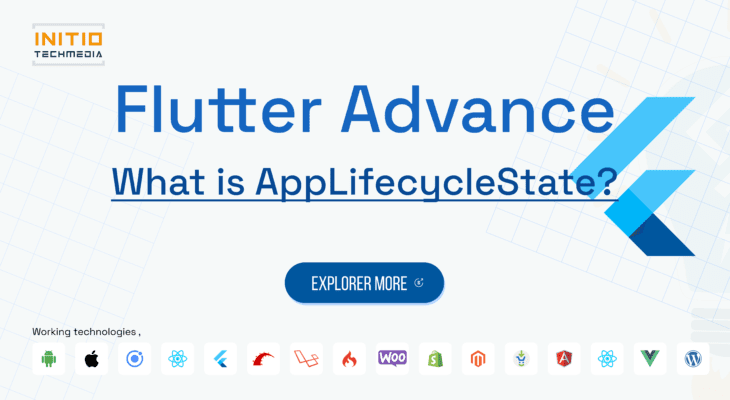Leading Mobile & web Development company which is providing Ready to publish apps & on demands application in Global Bussiness.
- 908, B Square 2, Ambli Rd, near Hotel Double tree Hilton, Vikram NagarAhmedabad-380054, Gujarat, India
- (+91) 8758432204Give us a call
- contact@initiotechmedia.com24/7 online support

What is AppLifecycleState?
- payal patel
- May 22, 2023
- 0
AppLifecycleState is an enumeration in Flutter that represents the different states in the lifecycle of an application. It is part of the flutter/widgets.dart library. The AppLifecycleState enum has four possible values:
In this example, MyWidget is a stateful widget that implements WidgetsBindingObserver to observe changes in the application’s lifecycle. The didChangeAppLifecycleState method is overridden to update the _appLifecycleState variable whenever the app lifecycle state changes. The current app lifecycle state is then displayed using a Text widget in the build method.
Remember to add and remove the WidgetsBindingObserver using addObserver and removeObserver in the initState and dispose methods, respectively, to ensure proper lifecycle management and avoid memory leaks.
AppLifecycleState.inactive: This state indicates that the application is inactive. It is typically triggered when the application is in the background or when another application is in the foreground. In this state, the application might still be visible but cannot respond to user interactions.AppLifecycleState.paused: This state indicates that the application is paused. It occurs when the application is in the background and is no longer visible to the user. In this state, the application may be suspended by the operating system to free up resources.AppLifecycleState.resumed: This state indicates that the application has resumed. It occurs when the application transitions from the inactive or paused state to the active state. In this state, the application is visible and can respond to user interactions.AppLifecycleState.detached: This state indicates that the application is detached. It is specific to Flutter for web applications and occurs when the application is running in a separate tab or window. In this state, the application may not receive updates from the operating system, and some platform-specific functionality may be limited.
You can listen to changes in the application’s lifecycle by using the WidgetsBindingObserver mixin and overriding its lifecycle-related methods, such as didChangeAppLifecycleState. This allows you to perform certain actions or update the UI based on the current AppLifecycleState.
Here’s an example of how you can use AppLifecycleState with WidgetsBindingObserver:
import ‘package:flutter/widgets.dart’;
class MyWidget extends StatefulWidget { @override _MyWidgetState createState() => _MyWidgetState(); }
class _MyWidgetState extends State<MyWidget> with WidgetsBindingObserver { AppLifecycleState _appLifecycleState; @override void initState() { super.initState(); WidgetsBinding.instance.addObserver(this); }
@override void dispose() { WidgetsBinding.instance.removeObserver(this); super.dispose(); }
@override void didChangeAppLifecycleState(AppLifecycleState state) { setState(() { _appLifecycleState = state; }); }
@override Widget build(BuildContext context) { return Text(‘Current App Lifecycle State: $_appLifecycleState’); } }
WhatsApp us

